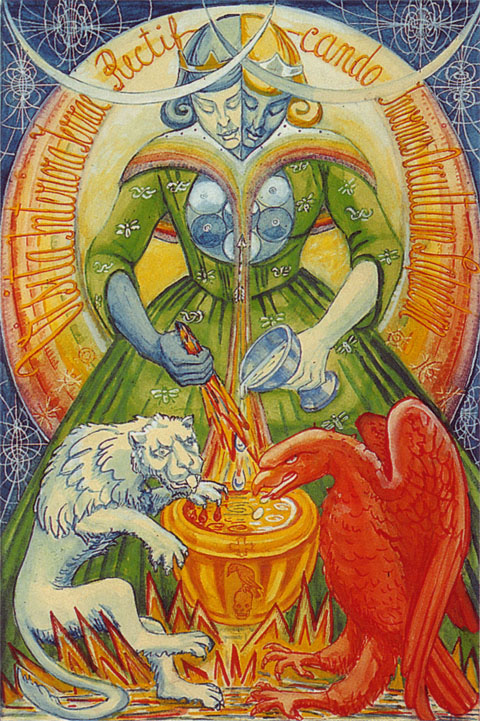
I spent some time recently looking closely at Liber V vel Reguli along with the commentary and the early draft notes, and feel like I have come to a few insights which could be of use to others.
As I’ve shown before, one of the main themes of Crowley’s spirituality is the movement from speech to silence and back again. This could also be viewed as the expression of nullity (Ain of Kabbalah) into manifestation (the Tree of Life itself) and the individual’s path of return back to nullity. The first part of this equation expresses Thelemic cosmology, the latter Thelemic soteriology.
In Reguli these movements are dramatized and expressed in the formula LAShTAL. LA means “not,” while AL means “God”. LA and AL represent nullity in concealment and manifestation respectively, while ShT is the process that mediates between them.
In order for ShT to mediate between LA and AL, they have to conjointly share something in common between LA and AL while also adding new information.

LA and AL both add to 31 by gematria. ShT also adds to 31 by way of the tarot cards these letters are attributed to. Sh or Shin is the Hebrew letter assigned to The Aeon, Atu XX, and T or Teth is assigned to Lust, Atu XI.
As someone recently pointed out to me, there is a tradition in the Golden Dawn, recorded in the Z1 document, of ST denoting an influence from Kether. ST is the Coptic letter ⲋ (“ⲥⲟⲟⲩ” or “soou”). Crowley continues this tradition by assigning this letter to Kether in 777, Column LI.
So by means of its association with 31 and Kether, ShT is identical with the (N)One at the foundation of Thelemic ontology and theology.
But ShT has an additional function. It also indicates the Beast and Babalon conjoined. It is a sexual formula. This sexual formula is indicated by how it is represented in Reguli on the human body and on the Tree of Life.
In the ritual, Aiwass, Therion, and Babalon are attributed to the cross paths of the Tree of Life: Daleth, Teth, and Pe respectively. The cross paths are important as they mediate between the Pillar of Severity and the Pillar of Mercy.
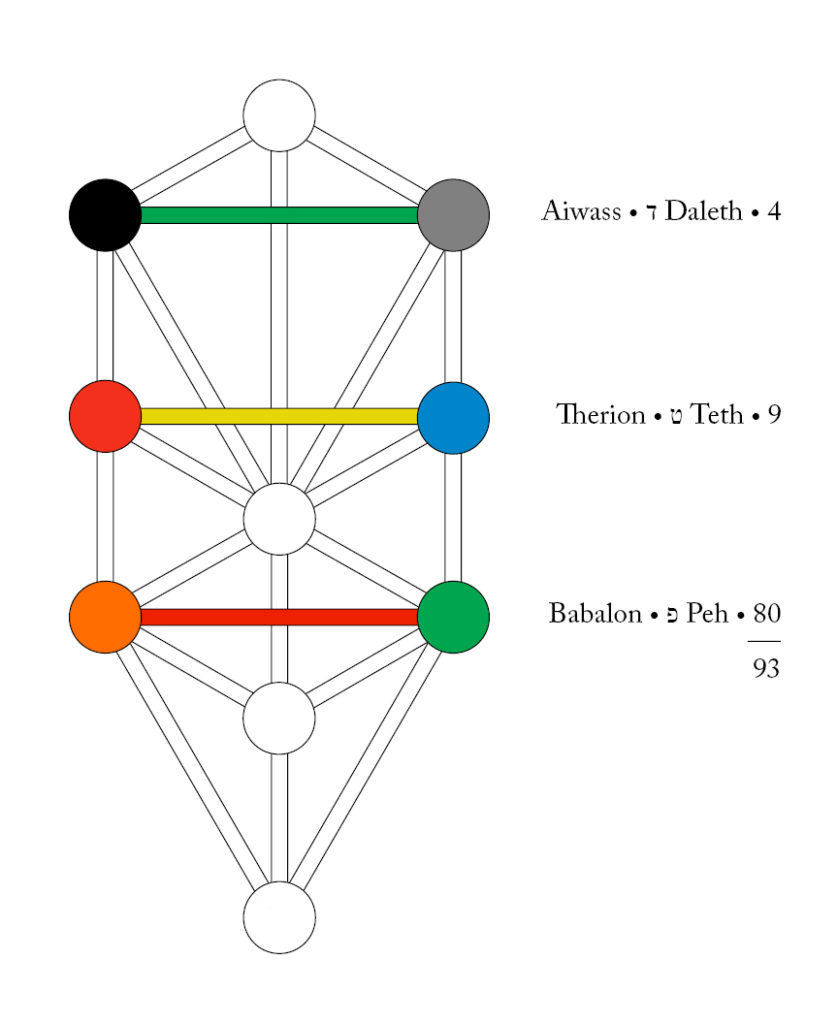
As taught in the Golden Dawn 4°=7□ ritual, the left pillar, the Pillar of Severity, is associated with the letter Shin, which is assigned to elemental fire, while the right pillar, the Pillar of Mercy, is Mem or elemental water. The Middle Pillar is then Aleph, which is elemental air. Fire is archetypally masculine, water feminine, and air androgyne.
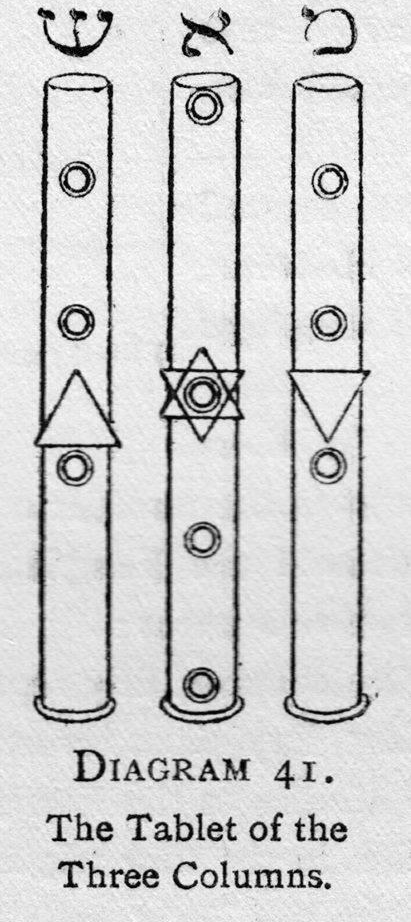
However, these sexual characteristics are not assigned to the pillars in a straightforward way. While the Pillar of Severity is fiery and masculine, the topmost sephira, Binah, is archetypally feminine. She is the supernal Mother. And opposite her, on the Pillar of Mercy, we find Chokmah, which is archetypally masculine, the supernal Father. They are “reflected” in Netzach (masculine-feminine) and Hod (feminine-masculine) respectively, as Kether is reflected in Tiphareth. This reflection occurs both horizontally across the Tree (Binah and Netzach and Chokmah and Hod are opposite each other across the Middle Pillar) and vertically down the Tree (they are opposite Tiphareth). The vertical and horizontal “components” of Liber V vel Reguli work with this double-reflection of sexual energy.
One can view this double-reflection of magical sexual polarity taking place on the Tree as a movement of energy down the Tree of Life from Kether into the subsequent Sephiroth along the paths. One androgyne current emerging from Kether, represented by the path of Aleph, becomes masculine upon reaching Chokmah. There it progresses down the tree along the archetypally masculine paths of Vau, Yod, Ayin, and Resh, into Yesod. In Yesod it is met by a complementary feminine path, originating with Beth’s entry into Binah, and progressing down the Tree along the paths of Cheth, Lamed, Nun, and Tzaddi.
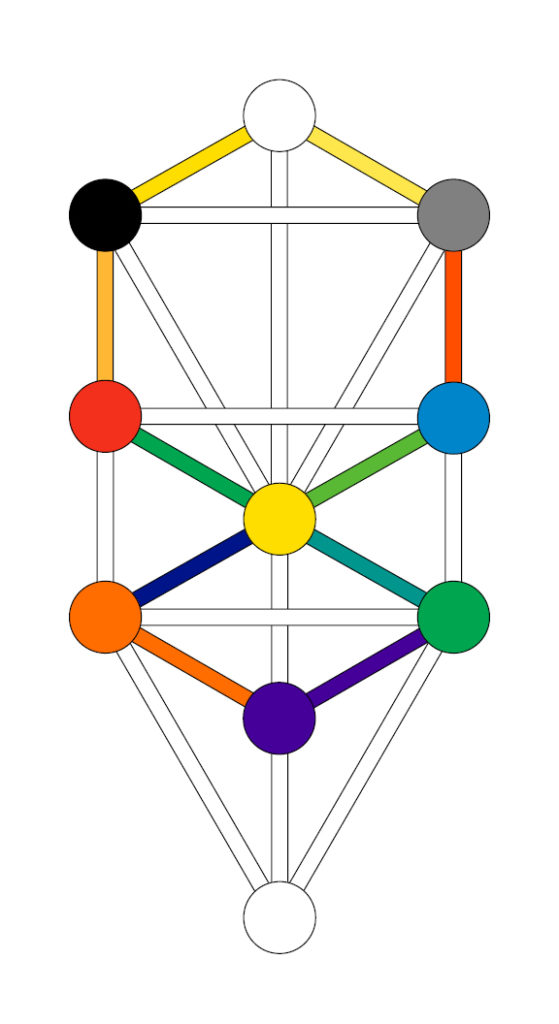
This exchange and “mixing in Yesod” is represented on the Art card, Atu XIV. Art is a hieroglyph of the path of Samekh, which links Yesod with Tiphareth. Here we see the Lion and the Eagle which have exchanged their colors as represented earlier on the Lovers card, Atu VI. If the paths on the Tree represent these essences or potencies, then they were exchanged at Tiphareth, a sphere which, among other things, is the site in which the Rose (Kteis) and Cross (phallus) are conjoined. The caldron is Yesod, which is linked with the sexual organs and the Muladhara cakra. We see spiritual air—presumably the Medicine of Metals—rising out of the caldron, represented by the arrow, as the Caput Mortuum (skull) drops to the bottom.
The cross paths are important to this process, because they are mediating the exchange of energies down the Tree. They are in a sense guiding and determining the separation and mixing of these sexual polarities. That these paths add up to 93 is significant. It tells us that the 93 magical current has something essential to do with the production of sexual polarity from out of androgyny and back again. It has to do with the movement of 0 to 2 (magick) and from 2 to 0 (mysticism), both as a personal spiritual journey and as a cosmological process. Aiwass, Therion, and Babalon are personages representing these governing principles.
For me personally, this is not simply theory. When I’m serving as Priest in the Gnostic Mass, I picture this exchange of energy occurring—moving down and wrapping around and joining mine and the Priestess’s hearts—at the consummation of the eucharist. We are linked energetically at the levels of mind (Daleth and Kether), heart (Teth and Tiphareth), and body (Peh and Yesod). The Tree of Life with the cross-paths can also be used as scaffolding for visualizations during sex magick workings.
If the horizontal component is governed by Aiwass, Therion, and Babalon, the vertical component is governed by Nuit, Ra-Hoor-Khuit, and Hadit. Nuit is associated with the Sahasrara cakra/Kether/the Three Negative Veils; Ra-Hoor-Khuit is linked specifically with the Anahata cakra and the paths of Teth, Yod, and Lamed (which add to 49), but also arguably with the entirety of the Tree in manifestation (hence Microprosopus); and Hadit is linked with the Muladhara cakra and Yesod and/or Malkuth (Crowley refers to this as the “seed” in his commentary).
The conjunction of Nuit and Hadit produces the godhead, Ra-Hoor-Khuit (or Heru-Ra-Ha, so as to include Hoor-paar-kraat). Hadit, as the consciousness or point of view of the individual, is implanted in Malkuth as a seed represented by Heh-final, the Virgin Daughter whose destiny is to be seated upon the Throne of the Mother (Binah). Crowley consistently related the three deities of the Book of the Law to the Tree of Life this way.
So one thing to take note of when attempting to understand LAShTAL is that it shares the same form or structure taken by these three personages in relation to the Tree of Life. You have two simple extremes mediated by a complex third thing sharing characteristics with both of the extremes. Indeed, the entire Tree of Life itself—or Ra-Hoor-Khuit—could be seen as a means of mediating between these oppositions.
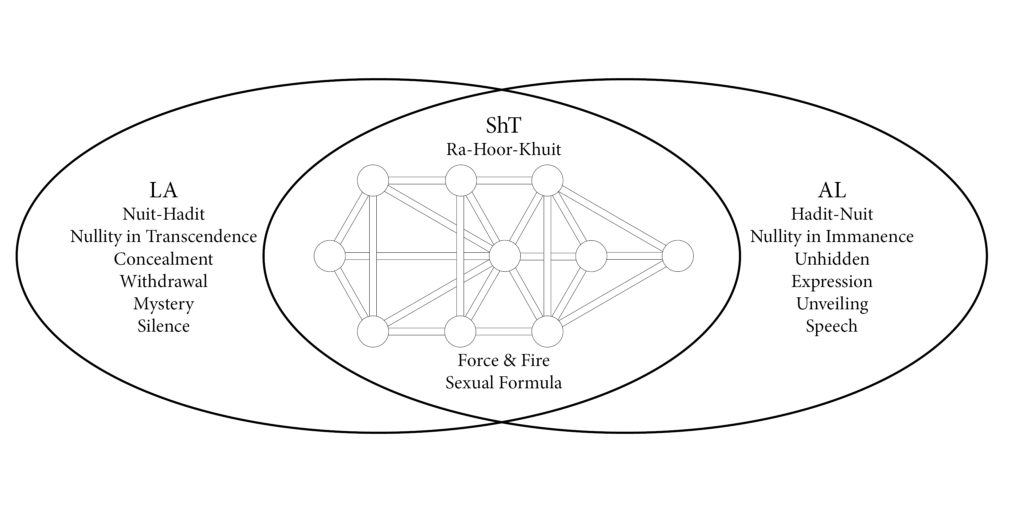
But how does the introduction of the horizontal component modify or inform this cosmological and theological process of the implantation, germination, and return of Hadit to the source?
The cross-paths enter into this as they are involved in the drawing of the Hexagram of Nature on the Tree of Life. Generally speaking, the hexagram is the symbol of the union of the individual with the divine, with the mirroring in the microcosm of the structure of the macrocosm. As such it is symbolic of the individual who has become divine. The cross-paths of Teth and Pe are involved in this hexagram—in fact are the only actual paths involved—as they form bases of the two interlocking triangles.
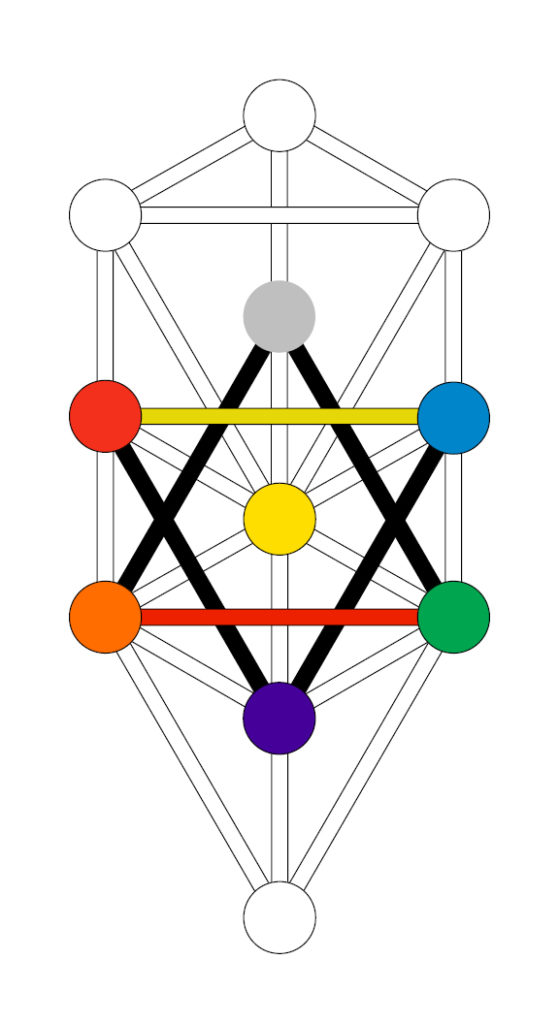
Typically the upward-pointing triangle represents fire and is therefore masculine, while the downward-pointing triangle is water and feminine. But a different connotation is suggested in Reguli where the base of the upward-pointing triangle is assigned to Babalon, and the base of the downward-pointing triangle is Therion. The polarities are reversed.
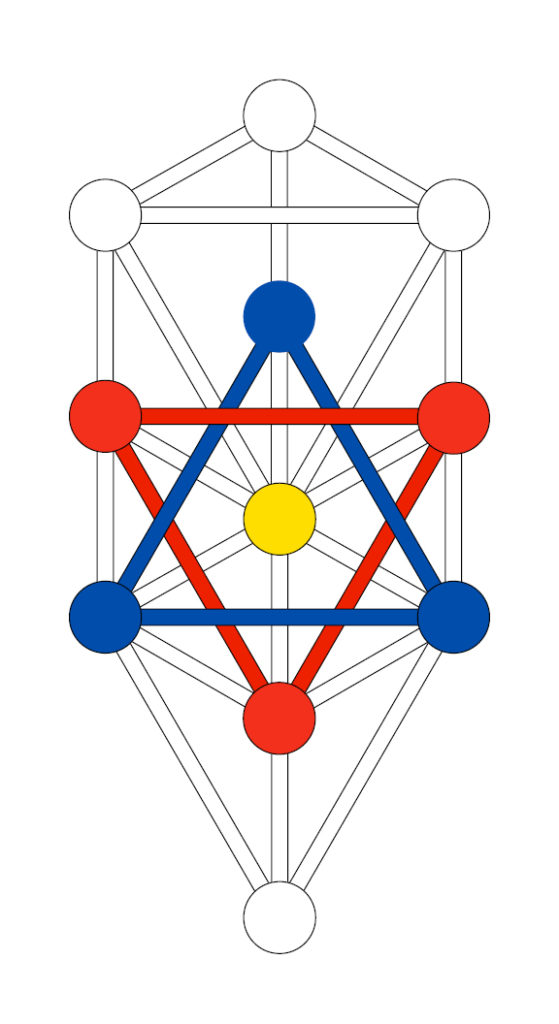
This suggests not so much the familiar Hexagram of Nature but rather the Magical Hexagram as described by Crowley in the Book of Lies, where fire points down and water up.
In the ordinary Hexagram, the Hexagram of nature, the red triangle is upwards, like fire, and the blue triangle downwards, like water. In the magical hexagram this is reversed; the descending red triangle is that of Horus, a sign specially revealed by him personally, at the Equinox of the Gods. (It is the flame desending upon the altar, and licking up the burnt offering.) The blue triangle represents the aspiration, since blue is the colour of devotion, and the triangle, kinetically considered, is the symbol of directed force.
Book of Lies, Chapter 69
Crowley explicitly associates force with the path of Teth in Reguli, as he associates fire with Shin. Hence ShT represents “force and fire”. In the context of the ritual, these triangles would interlock and interpenetrate around Tiphareth, representative of the Anahata cakra, Ra-Hoor-Khuit, and, as we saw earlier, Kteis-Phallus or the Rose-Cross.
As the upward-pointing blue triangle represents Babalon, the Mother, we could attribute the three Mother Letters (Aleph, Mem, and Shin) to its three points, as we might attribute the masculine trinity, IAO, to the three points of the downward-pointing red triangle. Their conjunction gives us the word AShIAVM, which has the same value as MShICh (Messiah) and NChSh (Nechesh, Serpent).
The Messiah or Anointed One affects the union between the individual and the divine. The Serpent in the Garden of Eden is the initiator of mankind into knowledge or gnosis. In Thelemic soteriology, this saving, initiating power is not one individual but rather the conjoining of two individuals, Therion (666) and Babalon (156). And the way in which this union between the divine and the individual is affected is sexual in nature.
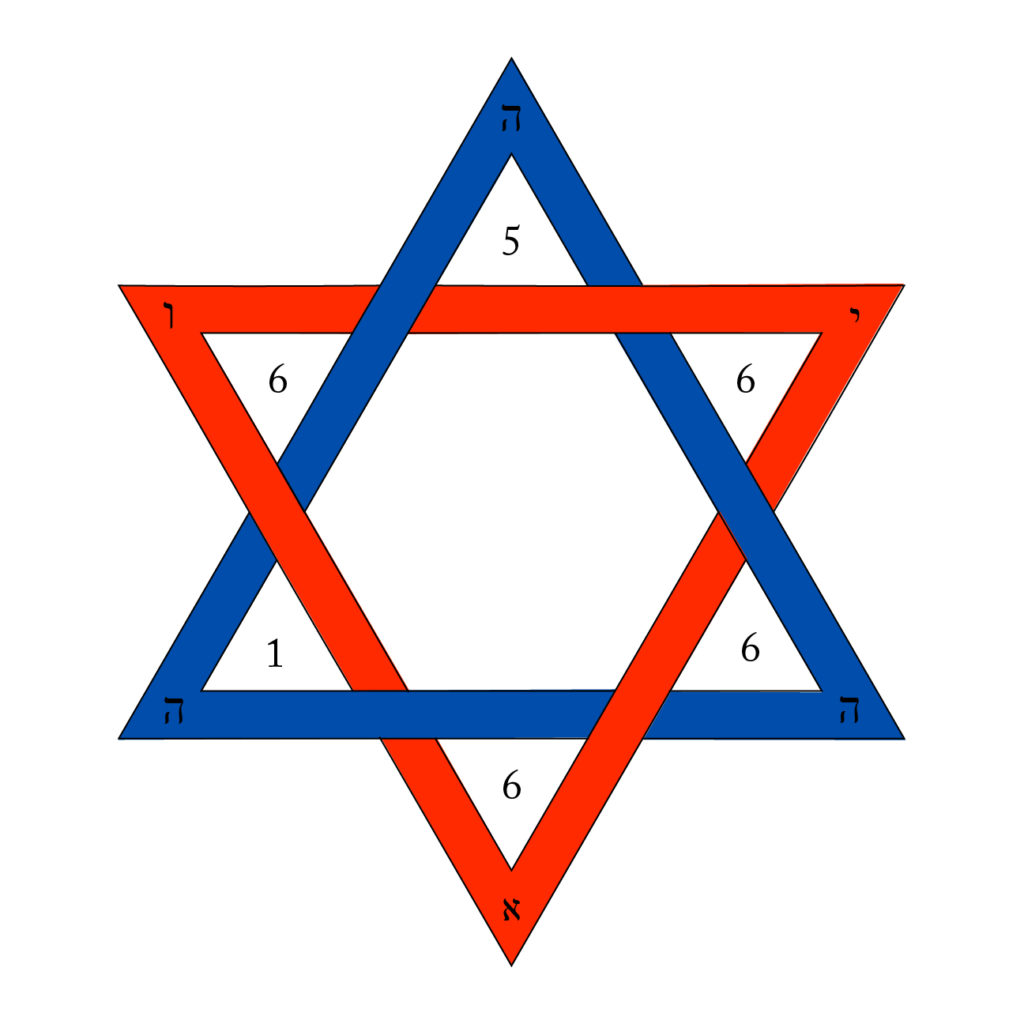
In this formula AShIAVM, the three mother letters are concealed by the letter Heh, giving us AHIHVH, the Great Name which is the conjunction of AHIH and IHVH.
AHIH is the godname of Kether. It represents existence in is most abstract quality or Macroprosopus. In the context of Reguli, it is LA, Nuit and Hadit conjoined.
IHVH represents god in manifestation or Microprosopus. It enumerates to 26 by gematria, which is 13 x 2. 13 is the enumeration of AChD or unity. IHVH therefore expresses unity (AL) by means of duality (ShT or Beast and Babalon conjoined). It is the way in which nullity expresses itself in manifestation or as the Tree of Life or 0=2.
Antonio Lau has come to a similar conclusion in his analysis of how the formula of AHIHVH relates to the Lesser Ritual of the Pentagram:
The conclusion would be that all the points of the Lesser Ritual of the Pentagram (32) on the whole create another Hexagram that symbolizes the Qabalistic Zero, radiating from the center of the Column and flooding the whole Circle with the Limitless Light of Ain Soph Aur. And the Hexagram is the formula of unifying opposites (positive and negative, active and passive, male and female), by the 0=2 Equation.
This sheds light on what it means that Reguli is meant to “invoke the energies of the Aeon of Horus.” The “first gesture” of the ritual—the drawing of the Elevenfold Seal—is depicting the unfolding process leading to the creation of the cosmos. It is also establishing the scaffolding—the cross-paths—that allow for the process of return. The “second gesture”—in which the Son raises the Daughter to the Throne of the Mother—is the familiar process of Tetragrammaton which, by means of sexual interaction between Son and Daughter, the process of return takes place. What Reguli adds to this conception is the idea that Nuit and Hadit (Daughter and Son) must become “sexually mature” as Babalon and Therion on their way of return.
AHIHVH is important for other aspects of Crowley’s spirituality. He relates it to the Lesser Ritual of the Pentagram. By means of the LRP it is indirectly connected with the production of the Medicine of Metals. The connection with the Medicine of Metals is made explicit through Crowley’s discussion of the production of the Eucharist of Six Elements in Magick in Theory and Practice Chapter 20. The production of this medicine is a secret guarded by the Sanctuary of the Gnosis of O.T.O. This formula is also the guiding structure behind Liber HHH, which describes some of the work of the Outer College of A∴A∴. At least one Thelemic author, J. Daniel Gunther, has made an extensive case for the AHIHVH formula being essential to a comprehension of Thelemic initiation in general. (See Initiation in the Aeon of the Child and The Angel and the Abyss.)
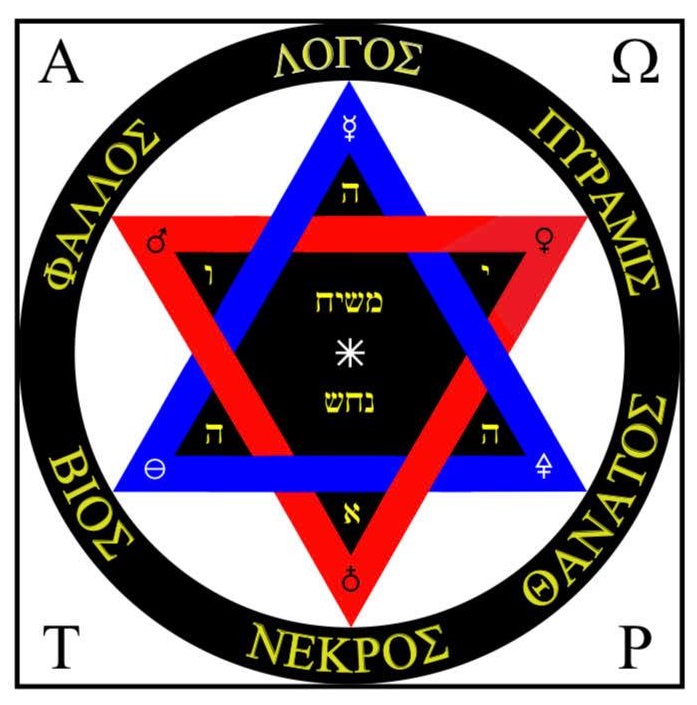
As I said in my recent talk on art and magick, when a magical formula is involved in so many disparate aspects of Crowley’s magick—especially when it illuminates mysteries of both A∴A∴ and O.T.O.—you can bet it is essential to an understanding of Thelemic spirituality generally. I hope to deal with this formula in greater depth in subsequent writings, exploring more fully its importance for Thelemic magick generally.
As for Reguli, my treatment of it here is not exhaustive. I have hardly dealt with the function of the cross-path of Daleth or how Aiwass figures into all of this. (There’s another hexagram that uses the path of Daleth as the base of a triangle.) I didn’t even touch on the elemental attributions of the deities/quarters, and I barely dealt with the significance of the cakras. But hopefully this shows the way in which Reguli is expressive of the underlying ontology and theology of Thelema and how the sex magick implicit in it relates to Crowley’s broader spiritual concern as expressed in the AHIHVH formula.
